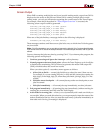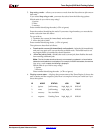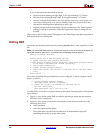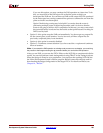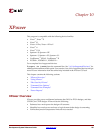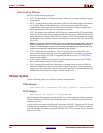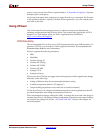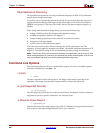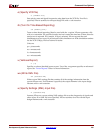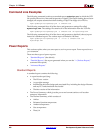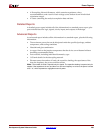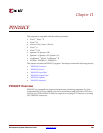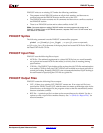
200 www.xilinx.com Development System Reference Guide
Chapter 10: XPower
R
Other Methods of Data Entry
All asynchronous signals are set using an absolute frequency in MHz. All synchronous
signals are set using activity rates.
An activity rate is a percentage between 0 and 100. It refers to how often the output of a
registered element changes with respect to the active edges of the clock. For example, a
100MHz clock going to a flip flop with a 100% activity rate has an output frequency of
50MHz.
When using other methods of design entry, you must set the following:
• Voltage (if different from the recommended databook values)
• Ambient temperature (default = 25 degrees C)
• Output loading (capacitance and current due to resistive elements)
• Frequency of all input signals
• Activity rates for all synchronous signals
If you do not set activity rates, XPower assumes 0% for all synchronous nets. The
frequency of input signals is assumed to be 0MHz. The default ambient temperature is 25
degrees C. The default voltage is the recommended operating voltage for the device.
Note:
The accuracy of the power and thermal estimates is compromised if you do not set all of the
above mentioned signals. At a minimum, you should set high power consuming nets, such as clock
nets, clock enables, and other fast or heavily loaded signals and output nets.
Command Line Options
This section describes the XPower command line options. For a list of available options
from the command line, run xpwr -h.
-l (Limit)
-l [limit]
Imposes a line limit on the verbose report. An integer value must be specified as an
argument. The integer represents the output number of lines in the report file.
-ls (List Supported Devices)
-ls [architecture]
Lists the supported Xilinx devices in the current software installation. Use the architecture
argument to specify a specific architecture, for example Virtex.
-o (Rename Power Report)
-o reportName.pwr
Specifies the name of the output power report file. If a filename is not specified, the output
power report is the input design filename with a .pwr extension.



